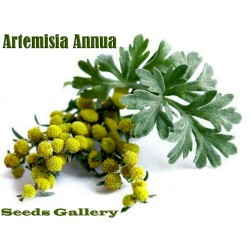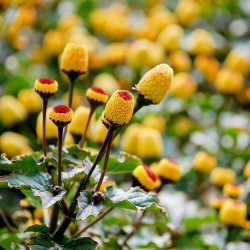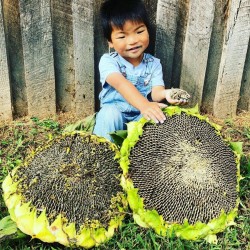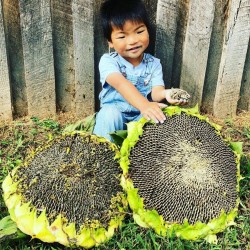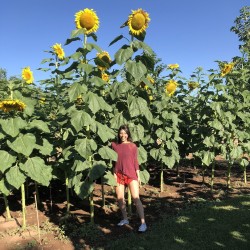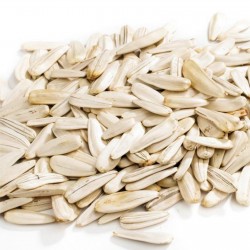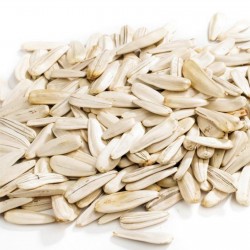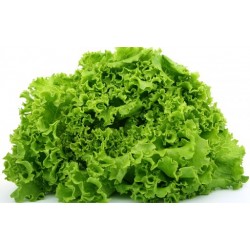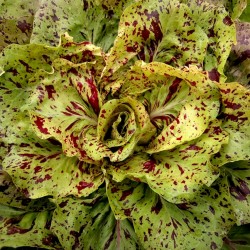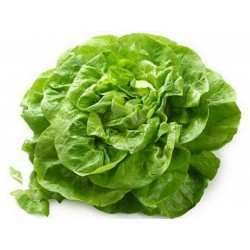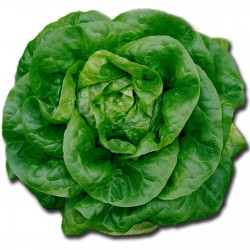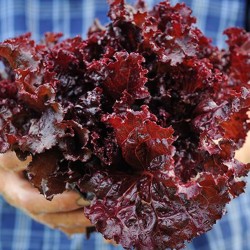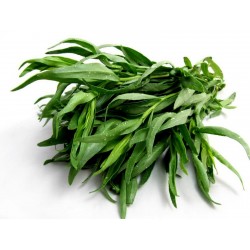
Tarragon Seeds Herb...
السعر
2.25 €
(SKU: MHS 42)
Seeds Gallery EU,
5/
5
<meta http-equiv="Content-Type" content="text/html; charset=UTF-8" />
<h2><strong>Tarragon Seeds Herb (Artemisia dracunculus)</strong></h2>
<h2><span style="color: #ff0000;"><strong>Price for Package of 100 seeds.</strong></span></h2>
<p>Tarragon (Artemisia dracunculus), also known as estragon, is a species of perennial herb in the sunflower family. It is widespread in the wild across much of Eurasia and North America and is cultivated for culinary and medicinal purposes.</p>
<p>One subspecies, Artemisia dracunculus var. sativa, is cultivated for use of the leaves as an aromatic culinary herb. In some other subspecies, the characteristic aroma is largely absent. The species is polymorphic.[7] Informal names for distinguishing the variations include "French tarragon" (best for culinary use), "Russian tarragon", and "wild tarragon" (covers various states).</p>
<p>Tarragon grows to 120–150 cm (4–5 ft) tall, with slender branches. The leaves are lanceolate, 2–8 cm (1–3 in) long and 2–10 mm (0.1–0.4 in) broad, glossy green, with an entire margin. The flowers are produced in small capitula 2–4 mm (0.1–0.2 in) diameter, each capitulum containing up to 40 yellow or greenish-yellow florets. French tarragon, however, seldom produces any flowers (or seeds).[8] Some tarragon plants produce seeds that are generally only sterile. Others produce viable seeds. Tarragon has rhizomatous roots that it uses to spread and readily reproduce.</p>
<h2><span class="mw-headline" id="Cultivation">Cultivation</span></h2>
<div class="thumb tleft">
<div class="thumbinner"><img alt="" src="https://upload.wikimedia.org/wikipedia/commons/thumb/c/c1/Dried_Taragon.JPG/150px-Dried_Taragon.JPG" width="150" height="200" class="thumbimage" />
<div class="thumbcaption">
<div class="magnify"></div>
Dried tarragon leaves</div>
</div>
</div>
<p>French tarragon is the variety used for cooking in the kitchen<sup id="cite_ref-9" class="reference">[9]</sup><span> </span>and is not grown from seed, as the flowers are sterile; instead it is propagated by root division.</p>
<p>Russian tarragon (<i>A. dracunculoides</i><span> </span>L.) can be grown from seed but is much weaker in flavor when compared to the French variety.<sup id="cite_ref-TBC_8-1" class="reference">[8]</sup><span> </span>However, Russian tarragon is a far more hardy and vigorous plant, spreading at the roots and growing over a meter tall. This tarragon actually prefers poor<span> </span>soils<span> </span>and happily tolerates drought and neglect. It is not as strongly aromatic and flavorsome as its French cousin, but it produces many more leaves from early spring onwards that are mild and good in salads and cooked food. Russian tarragon loses what flavor it has as it ages and is widely considered useless as a culinary herb, though it is sometimes used in crafts. The young stems in early spring can be cooked as an<span> </span>asparagus<span> </span>substitute.<span> </span>Horticulturists<span> </span>recommend that Russian tarragon be grown indoors from seed and planted out in the summer. The spreading plants can be divided easily.</p>
<p>A better substitute for French tarragon is Spanish tarragon (<i>Tagetes lucida</i>), also known as Mexican mint marigold, Mexican tarragon, Texas tarragon, or winter tarragon.<sup id="cite_ref-10" class="reference">[10]</sup><span> </span>It is much more reminiscent of French tarragon, with a hint of anise. Although not in the same genus as the other tarragons, Spanish tarragon has a stronger flavor than Russian tarragon that does not diminish significantly with age.</p>
<h2><span class="mw-headline" id="Health">Health</span></h2>
<p>Tarragon has an aromatic property reminiscent of<span> </span>anise, due to the presence of<span> </span>estragole, a known<span> </span>carcinogen<span> </span>and<span> </span>teratogen<span> </span>in mice. The<span> </span>European Union<span> </span>investigation revealed that the danger of estragole is minimal even at 100–1,000 times the typical consumption seen in humans.<sup id="cite_ref-ema1_11-0" class="reference">[11]</sup><span> </span>Estragole concentration in fresh tarragon leaves is about 2900 mg/kg.<sup id="cite_ref-12" class="reference">[12]</sup></p>
<h2><span class="mw-headline" id="Uses">Uses</span></h2>
<h3><span class="mw-headline" id="Culinary_use">Culinary use</span></h3>
<p>Tarragon is one of the four<span> </span><i>fines herbes</i><span> </span>of<span> </span>French cooking, and is particularly suitable for chicken, fish, and egg dishes. Tarragon is the main flavoring component of<span> </span>Béarnaise sauce. Fresh, lightly bruised sprigs of tarragon are steeped in<span> </span>vinegar<span> </span>to produce tarragon vinegar.</p>
<p>Tarragon is used to flavor a popular carbonated<span> </span>soft drink<span> </span>in the countries of<span> </span>Armenia,<span> </span>Azerbaijan,<span> </span>Georgia<span> </span>(where it originally comes from) and, by extension,<span> </span>Russia,<span> </span>Ukraine<span> </span>and<span> </span>Kazakhstan. The drink, named<span> </span>Tarkhuna, is made out of sugary tarragon concentrate and colored bright green.</p>
<p>In<span> </span>Iran, tarragon is used as a side dish in<span> </span>sabzi khordan<span> </span>(fresh herbs), or in stews and in Persian style pickles, particularly khiar shoor (pickled cucumbers).</p>
<p>In<span> </span>Slovenia, tarragon is used in a variation of the traditional<span> </span>nut roll<span> </span>sweet cake, called<span> </span><i>potica</i>. In<span> </span>Hungary<span> </span>a popular kind of chicken soup is flavored with tarragon.</p>
<p><i>cis</i>-Pellitorin, an<span> </span>isobutyramide<span> </span>eliciting a<span> </span>pungent<span> </span>taste, has been isolated from the tarragon plant.<sup id="cite_ref-13" class="reference">[13]</sup></p>
<h2><span class="mw-headline" id="Chemistry">Chemistry</span></h2>
<p><i>A. dracunculus</i><span> </span>oil contained predominantly<span> </span>phenylpropanoids<span> </span>such as<span> </span>methyl chavicol<span> </span>(16.2%) and<span> </span>methyl eugenol<span> </span>(35.8%).<sup id="cite_ref-14" class="reference">[14]</sup><span> </span>Gas chromatography/mass spectrometry<span> </span>analysis of the essential oil revealed the presence of<span> </span><i>trans</i>-anethole<span> </span>(21.1%),<span> </span>α-<i>trans</i>-ocimene<span> </span>(20.6%),<span> </span>limonene<span> </span>(12.4%),<span> </span>α-pinene<span> </span>(5.1%),<span> </span><i>allo</i>-ocimene<span> </span>(4.8%), methyl eugenol (2.2%),<span> </span>β-pinene<span> </span>(0.8%),<span> </span>α-terpinolene<span> </span>(0.5%),<span> </span>bornyl acetate<span> </span>(0.5%) and<span> </span>bicyclogermacrene(0.5%) as the main components.<sup id="cite_ref-15" class="reference">[15]</sup><span> </span>The organic compound<span> </span>capillin<span> </span>was initially isolated from<span> </span><i>Artemisia capillaris</i><span> </span>in 1956.</p>
MHS 42 (100 S)





